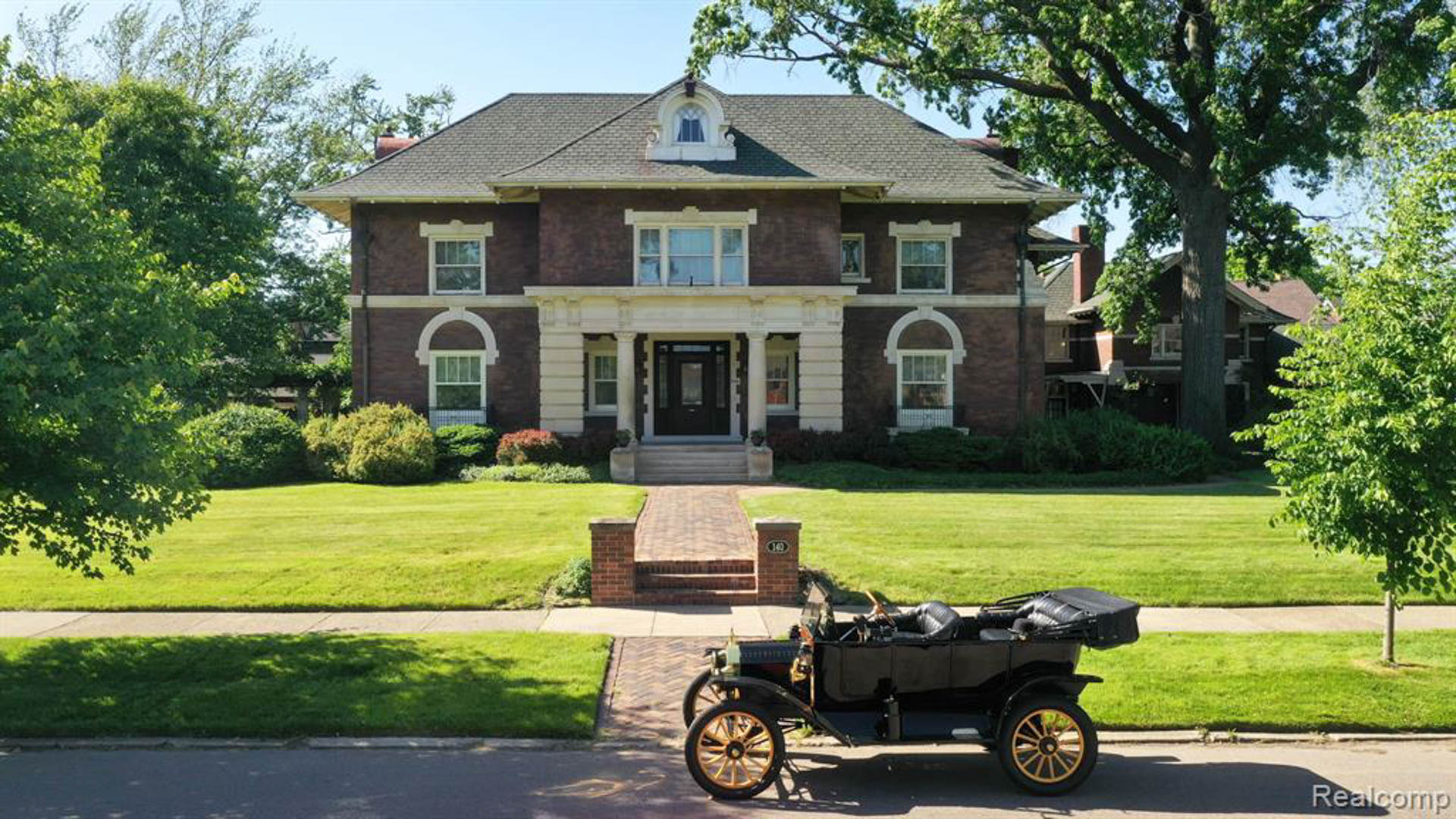

It can be difficult to come to terms with the impact Henry Ford had on the auto industry. On one hand, he revolutionized the way cars were manufactured and he developed a car for the people during a time when automobiles were almost exclusively for the wealthy. Those are objectively good things and the auto industry wouldn’t be what it is today without Ford. However, his antisemitic views are impossible to ignore and properly place into context the impressive feats of an industry he helped to create. His home in Detroit, which he lived in before moving to Dearborn, Michigan, is up for sale now, and if only these walls could talk.
Ford lived in this Detroit home from when it was built in 1908, as its original owner, until 1918 when he moved to Dearborn, Michigan. It was in this house that Ford’s ideas for the Model T and assembly line were brewing, and when his son Edsel began his love for automotive engineering. The first Ford plant to successfully operate an assembly line was the Highland Park plant in 1913, which means Ford lived in this home when the automotive industry as a whole changed forever. The historical American and automotive significance to this home is undeniable.

However, after Ford moved to Dearborn in 1918, he bought The Dearborn Independent, a local newspaper in which he pushed public, outrageous antisemitic views. Ford shuttered the Independent in 1927 and officially apologized for the outrageous articles he reportedly demanded, but the damage to his reputation was done.
It’s difficult to ignore his important ideas that changed the automobile forever, ideas that were certainly crafted in this home during similar private conversations and thoughts—perhaps alongside his despicable antisemitic views. Would someone else have created an automotive assembly line had Ford not done so? Probably, but he’s still the one that helped pioneer the invention that reshaped automotive manufacturing forever. Which makes this 1908 home both historically important and complicated.

As far as the actual house itself, it’s an early 20th century Italian Renaissance-style home that seems mostly original. There are a few appliance updates, such as a modern refrigerator and gas stove, but you can still see the imperfect plaster walls, period-style plumbing for the shower and bathrooms, and even an old-school telephone-style intercom system. So much of the architecture is beautiful and impressive, in ways modern architecture just isn’t. Forget the Henry Ford connection, the house was built with such ornate, beautifully crafted trim work, railings, and stonework, things that were made to be beautiful, for no other reason than to be beautiful. It isn’t my style, personally, but as someone who just renovated a house from the ’70s—when things seemed were apparently made as cheaply as possible—it’s hard to not be impressed by this house’s craftsmanship.
It’s also massive. At 7,263 square feet, with four bedrooms and four and a half bathrooms, it’s an enormous house that also has a carriage house, a massive garden, and a large patio. This home’s history is complicated, to say the least, but its significance to history is undeniable.
Tips? Send them to tips @thedrive.com